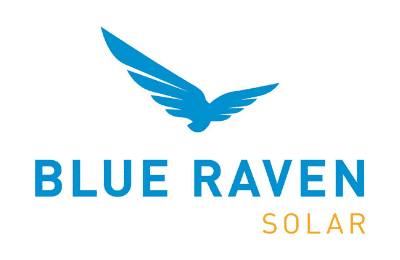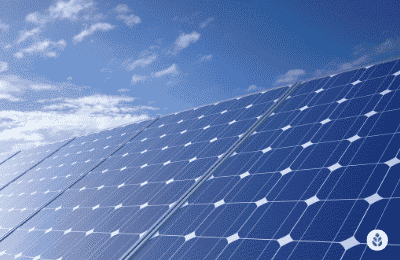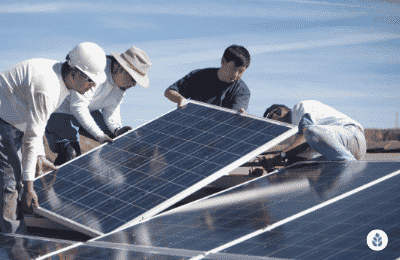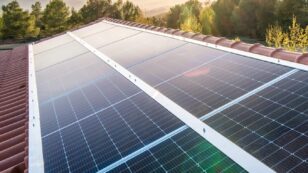 Reviews
Reviews
New Mexico Solar Incentives (Rebates, Tax Credits & More in 2024)
In this guide to reducing your solar conversion costs by taking advantage of solar incentives in New Mexico, you’ll learn:
- What solar benefit programs are available to solar customers in New Mexico?
- How do the solar perks in New Mexico affect the cost of solar panels?
- How do you file for the federal tax credit in New Mexico?
Each product and or company featured here has been independently selected by the writer. You can learn more about our review methodology here. If you make a purchase using the links included, we may earn commission.
Do New Mexico Solar Incentives Make It Affordable for Homeowners to Go Solar?
Yes, the solar benefit programs available to New Mexicans do make solar adoption more affordable.
The average cost to convert to solar in NM is around $24,150 before any perks are taken. This is based on the average system size of 7 kilowatts (kW) to offset local energy consumption and the typical cost per watt for photovoltaic (PV) equipment in the area of $3.45.
This all-in price of a solar electric system is about $5,800 lower than the national average, but it’s still too much for many New Mexicans to justify. Thankfully, the state has a progressive Renewable Portfolio Standard (RPS) goal, which leads electric companies and municipalities to offer benefit programs to make solar adoption more accessible.1
As a result, the state has more perks available for solar adoption than most others, which means your solar array is more affordable and more valuable overall.

NM Solar Group

Local Service
Average cost
Pros
- Offers products from leading manufacturers
- Outstanding customer service
- Makes charitable contributions
- Competitive pricing
Cons
- Slightly limited service offerings
- Relatively young company

Blue Raven Solar
Pros
- Industry-leading in-house financing
- Competitive pricing
- Excellent reputation
Cons
- Doesn't offer solar batteries (coming 2022)

OE Solar
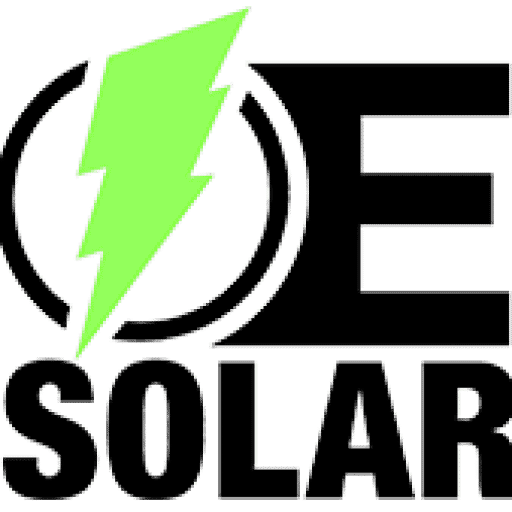
Regional Service
Average cost
Pros
- Many years of experience
- Comprehensive service offerings
- Outstanding customer service
Cons
- No leases or PPAs
- Limited brands of solar equipment available
We’ll include a breakdown of all of the benefit programs available for solar conversion in your area in the table below, as well as an average expected return or effective savings.
| Solar Benefit Programs in New Mexico | Incentive Type | Description | Occurrence | Estimated Dollar Amount You Can Receive |
| Federal Solar Investment Tax Credit (ITC) | Federal | This is a credit for 30% of your system cost that gets applied to your income tax liability | One-time: Gets applied once when you file your taxes after installation. However, unused credit can be rolled over to future tax years for five years | $7,245, on average, in New Mexico |
| New Solar Market Development Tax Credit | State | This is a state tax credit that works just like the federal one. It’s for 10% of your system total up to a maximum of $6,000. | One-time: Gets applied once when you file your taxes following solar adoption. You can roll unused credits over for up to five years | $2,415, on average, in New Mexico |
| Gross Receipts Tax Exemption | State | The State of New Mexico waives sales and use tax on photovoltaic systems for solar contractors. Those savings are often passed to the customer | One-time: Gets applied once when you purchase your solar power system | $1,207, on average, in New Mexico |
| Property Tax Exemption for Residential Solar Systems | State | This perk prevents your PV system from contributing to your property’s tax-assessed value, preventing your taxes from increasing after solar adoption | Ongoing: You’ll see the benefits year after year when your taxes are re-assessed | Varies based on your system value and local tax rates |
| Net Energy Metering | Local | Offers energy credits for all excess power you produce and send to the electric grid. Those credits can pay down future electric bills | Always in Effect: Once you’re enrolled in net energy metering, all excess energy will generate credits for later use | Varies based on your system size, your monthly energy bills and more |
| Local Incentives | Local | Local perks and solar rebate programs for solar, usually offered by utility companies and municipalities | Varies based on the specific benefit program | Varies based on the perk, your system size and cost and more |
What Do New Mexicans Need to Know About the Federal Solar Tax Credit?
The federal solar tax credit is for 30% of your system price. That amount gets applied to your income tax liability for the year you install your system.
The average system in your area costs around $24,150, putting the credit at $7,245. If, for example, you owe $7,500 on your income taxes, your tax burden would be decreased to $255 for that year. If you owe less than the credit amount, you can roll over unused credit for five years.
It’s important to note that this is not an upfront rebate, and the credit amount is not guaranteed. If you don’t owe enough on your tax bills to cover the full credit amount for five years after installation, you’ll lose any unused credit.
The federal credit was first made available in 2005 at 30% and was set to drop to 26% in 2022, 22% in 2023 and 0% in 2024. The credit rate schedule was changed in 2022 to the below:
- 30% for solar panel systems installed between 2022 and 2032
- 26% for systems installed in 2033
- 22% for systems installed in 2034
- The perk will be discontinued in 2035 unless Congress renews it again
How to Claim the Federal ITC in New Mexico
Claiming the federal credit is a quick and simple process, so it’s absolutely worth the time it takes to apply. You can follow the steps below to make sure you get the full benefit provided by this perk.
- Step 1: Install your solar array and record information about your solar panel installation company, the system size, the cost of the system and the details about where it was installed on your property.
- Step 2: When you’re ready to file your taxes, print out IRS form 5695 or make sure you answer questions accurately about installing a clean energy system on TurboTax, HR Block or whatever tax software you use.
- Step 3: Fill out the form using the information you gathered in step 1.
- Step 4: File the IRS form with your taxes or have your accountant do so. Alternatively, answer the related questions on your tax software.
EcoWatch’s Opinion on the Federal ITC in New Mexico
In our opinion, the federal credit is the most valuable solar perk you can take in your area, which is really saying something, given the number of other benefits available. The federal credit takes just a few minutes to apply for, but it provides an average value of over $7,200. It’s well worth the time and energy it takes to apply.
Again, it’s important to note that the credit won’t be as valuable to all solar customers. You’ll only be able to take the full credit if you owe an average of $1,449 per year on your tax bills for the five years following conversion.
Watch Below: Learn How Solar Panels Are Becoming So Efficient
What You Need to Know About the Solar Market Development Tax Credit in New Mexico
This incentive is New Mexico’s solar energy state tax credit. It works just like the federal credit in that it’s a percentage of your total system price that gets applied to your income tax liability. This income tax credit is also available for some energy efficiency upgrades aside from PV system adoption, like solar thermal systems.
The state credit is for up to 10% of your system installation costs or $6,000, whichever is lower. Given the typical system total of $24,150, most residents will see a credit value of around $2,415.
Just like the federal credit, this credit can be carried over to future tax years for up to five years if you can’t take the entire thing right away. As long as you expect to owe an average of just $483 per year over the next five years, though, you should be eligible for the full credit amount.
How to Claim the New Mexico Solar Tax Credit
Claiming the state credit is just as simple as claiming the federal one, but the application is significantly longer and more involved. You can follow the steps below to take advantage of the state credit.
- Step 1: Print out the form entitled Residential Solar NMAC 3.3.14 from the New Mexico Energy, Minerals and Natural Resources Department’s (EMNRD) website.
- Step 2: Fill out all applicable sections of the form, which requires some information about the cost of your system, the location where it was installed and your installer’s contact information. Many of the pages also require a contractor’s signature, so be sure to provide those pages to your installer for completion.
- Step 3: File the completed form alongside your state income taxes, or have your accountant do so for you. You should also be prompted for the necessary information when completing your tax filing on tax software.
EcoWatch’s Opinion on New Mexico’s Tax Credit for Solar Equipment
New Mexico’s statewide tax credit may not be able to match the value of the federal credit, but is one of the best state tax credits in the country. The vast majority of states offer no such credit, let alone a credit with a max value of $6,000.
All in all, this perk provides an excellent credit for what is likely to be less than 20 minutes of work on your part.
What You Need to Know About the Gross Receipts Tax Exemption in New Mexico State
This perk is really reserved for solar panel manufacturers and retailers, as it waives sales and use tax on all PV equipment. Given the average system value of $24,150 and the state’s gross receipts tax rate of between 5% and 8.813%, this perk saves between $1,207 and $2,128 in most cases.
How to Claim the Gross Receipts Tax Exemption in New Mexico
Since this sales tax exemption isn’t offered directly to consumers, there’s no action needed on your part to take advantage of the reduced sales tax. You can simply move forward with your solar project through an installer, and the benefit will be reflected in your final purchase price.
EcoWatch’s Opinion on New Mexico’s Gross Receipts Tax Exemption
This is a great perk, in our opinion, because it offers around $1,200 in savings on PV equipment, on average. Plus, it takes no effort to take advantage of, so the benefit is entirely automatic.
What You Should Know About the Exemption for Property Taxes for Residential Solar Systems in New Mexico
Since installing a solar power system on your home is expected to raise your property value, you would normally also see a bump in your property taxes.2 This exemption is for all solar equipment on your home, so the value added won’t affect your taxed-assessed value or your property taxes.
The exact amount this perk will save you varies based on many factors, like the size and cost of your system and your local property tax rate. Using the average system cost of $24,150 in your area and an average state property tax rate of 0.73%, you can assume an annual tax savings of about $176 with this incentive.
Since your system is expected to last and provide value for at least 20 years, these annual savings will add up to a total of $3,525 over time. The actual savings will be lower due to system depreciation.
How to Claim the Exemption for Property Taxes in New Mexico
Much like the gross receipts sales tax exemption, the property tax exemption in your area is automatic and doesn’t require any application or effort on your part. Your local tax assessor will simply ignore the value added by your solar energy system when determining the value of your home that can be taxed.
EcoWatch’s Opinion on the Exemption for Property Taxes in New Mexico
In our opinion, any perk that is automatic and saves solar customers money is great, and the property tax exemption fits this description perfectly. You don’t need to take any action at all other than moving forward with your system installation, and you’ll still save up to $3,525 with this perk.
What You Need to Know About Net Metering in New Mexico
Net energy metering — also just called NEM — is a popular solar policy throughout the U.S. It credits solar customers for all excess energy produced with their panels and applies those credits to future utility bills when production is lower than consumption.
Net energy metering is mandated by the New Mexico Public Regulation Commission (PRC) for all utility companies that follow its guidelines.
The PRC sets the rate for credited electricity, and it’s equal to the avoided cost rate in most cases. This is less than ideal, but it’s still a good perk to have. In some cases, as with Public Service Company of New Mexico (PNM), the credits rollover indefinitely, and you can always call on them for free, making it the equivalent of the retail rate.
Unfortunately, net energy metering policies have been declining in value and availability across the country, especially in states where RPS goals have expired or been reached.
The Land of Enchantment still has a solid RPS goal to be 100% carbon-free and get all of its electricity from renewable energy sources by 2050. As such, the likelihood is that net energy metering will remain as it is for the foreseeable future.
Still, it’s possible that the policy will disappear or change to a less beneficial version of NEM at some point.
How to Enroll in Net Energy Metering in New Mexico
Most reputable solar installers in NM will enroll you in net energy metering by filing the application for you, and coordinating any necessary inspections. This is a great option, as it means you’ll see the benefits of this perk without having to dedicate any time or effort to applying. Just in case, below are the steps you can take to make sure you get access to net energy metering.
- Step 1: Check with your utility provider to make sure you have a bidirectional meter installed on your home. This is required for interconnection. If you don’t, your electricity provider should upgrade your existing one for free.
- Step 2: Reach out to a reliable and experienced PV panel installer in your area. Ask for a free quote and confirm that the installer will handle your net energy metering application for you.
- Step 3: Proceed with your solar installation.
- Step 4: Check your first few energy bills after the installation is completed to ensure that your credits are accruing.
EcoWatch’s Opinion on Net Energy Metering in New Mexico
Net energy metering has historically been one of the most beneficial perks for solar customers in the country, and that’s no exception in your area. In our opinion, net energy metering — even at a below-retail rate — is a great option and helps maximize your long-term savings and the value you see from your panels.
Not only is NEM massively beneficial from a financial perspective, but it also takes no effort for most customers to enroll in, as installation companies often handle the process on their end.
Local Solar Incentives in New Mexico
In addition to the statewide perks mentioned above, there are some local benefit programs and perks that don’t necessarily apply to rooftop solar systems. We’ll list any additional perks available in your area below and include a brief description of each.
- Community Solar Program: The State of New Mexico passed legislation that makes community solar legal and provides guidelines for the distribution of power from solar farms.3
- New Mexico Solar Easements and Rights Laws: The state government provides access to easements to ensure you can access the solar energy that would normally hit your property. It also provides every property owner — even those in homeowners associations — the right to install rooftop solar panels.4 The City of Albuquerque has its own laws and regulations regarding solar access as well.5
- Farmington Electric Utility System Net Metering: Customers of Farmington Electric have access to this special net metering policy. It provides credits at the full retail rate and lets customers cash out or roll over credits at the end of each billing year.6
- PNM Performance-Based Solar Program: The Public Service Company of New Mexico provides the equivalent of a Solar Renewable Energy Certificate (SREC) program for its customers. For systems under 10 kW — which includes most residential solar systems — it will award every kWh of production with $0.0025 for the first eight years. Once the credits top $20, you can get a payout.7
- Sustainable Building Tax Credit: This is a statewide perk that offers a tax credit for buildings and homes that are certified by the U.S. Green Building Council or the Leaders in Energy and Environmental Design (LEED) organization.
Which Tax Incentives Are the Best In New Mexico?
Now that you have an understanding of all of the solar perks available in your area, we feel it’s best to explain which we believe are the most beneficial. Below, we’ll provide three perks that we believe are most valuable and shouldn’t be missed.
The Federal Solar Tax Credit
In our opinion, the federal credit is the single most important perk to take advantage of when converting to solar. It provides an average value of over $7,200 in your area and takes just a few minutes to file for. The payout-to-time-commitment ratio is outstanding and provides you with the biggest bang for your buck, and it’s available to all taxpayers.
The Tax Credit Offered by the State
Once you solidify the federal credit, we strongly recommend focusing your efforts on the state tax credit. This provides a much lower value of around $2,415, and the application takes longer. However, the time commitment is still minimal, and the potential savings you’ll see make it worthwhile.
Net Energy Metering (NEM)
Finally, we suggest making sure you take advantage of net energy metering. Eligibility is based on your utility provider, but it is available to most customers in the area. Many residents who are serviced by some of the larger utility companies will see an outstanding retail value for the excess energy they send to the grid.
Net energy metering helps pay off your panels more quickly, pushes up your long-term savings and makes your system more valuable. Plus, most customers will find that their installers enroll for them, so the perk takes no time or effort to take advantage of.
What New Mexicans Need To Know About SRECs
Solar Renewable Energy Certificates (SRECs) — or Renewable Energy Credits (RECs) — are credits you can earn simply for producing solar energy, even if you use the generated power on site. The SRECs can usually be sold on an open SREC market for a profit.
SRECs aren’t available statewide in the Land of Enchantment, but customers of PNM can earn SRECs for eight years following installation. You might be eligible for these credits as well, so you should check with your electric company to confirm.
Are SRECs taxable in New Mexico?
Yes, SRECs are taxable in your area, so you should expect to report the money you get from selling your credits as income.
What’s The Near-Term Outlook For More Incentives In New Mexico?
The tax credits, rebates and other perks available in your area appear to be here to stay, at least for the time being. There are no plans in place to improve or reduce benefit programs in the near future.
However, many states are seeing net metering programs get less appealing or get discontinued. It’s possible that net energy metering in NM will disappear at some point.
The cost information presented in this article is derived from a comprehensive analysis, incorporating data from multiple industry sources. The average cost per watt per state was calculated based on figures from Consumer Affairs, Energy Sage, and Berkeley Lab’s Electricity Markets & Policy Department. Additionally, monthly energy consumption and the average monthly cost of electricity were sourced from the U.S. Energy Information Administration, ensuring a well-rounded and accurate representation of the information presented.
FAQ
Below, we’ll provide answers to the most common questions we get asked about perks and benefit programs from customers in your area.
There is no evidence to suggest that new perks will pop up to push solar adoption further in the state. However, since New Mexico does have a progressive RPS goal to be carbon-free by 2050, it’s possible that utility providers and municipalities will offer additional perks in the near future to make that goal a reality.
The Inflation Reduction Act (IRA) was the piece of legislation responsible for extending the federal credit to 2035 and pushing the current credit rate back up to 30%. This was a massive win for solar customers, especially those that it affected retroactively prior to August 2022 when the bill was signed.
Additionally, the IRA pushed credits for electric vehicles (EVs) up. Some makes and models come with a credit of up to $7,500.
There are no plans in place to make solar benefit programs less appealing or less available in your area in the next two years. However, if something is to change, it would likely be NEM. This policy is getting less valuable in many states as more and more customers adopt solar and take advantage of the energy savings the policy provides.
If anything, we’d expect the net energy metering program to disappear or become entirely voluntary in the state.
Top Solar Installers in New Mexico cities
Comparing authorized solar partners
-
- Offers products from leading manufacturers
- Outstanding customer service
- Makes charitable contributions
- Competitive pricing
- Slightly limited service offerings
- Relatively young company
A+Oustanding Local Installer
Having trouble deciding? Click below and use our process to receive multiple quotes instead:

 233k
233k  41k
41k  Subscribe
Subscribe 
